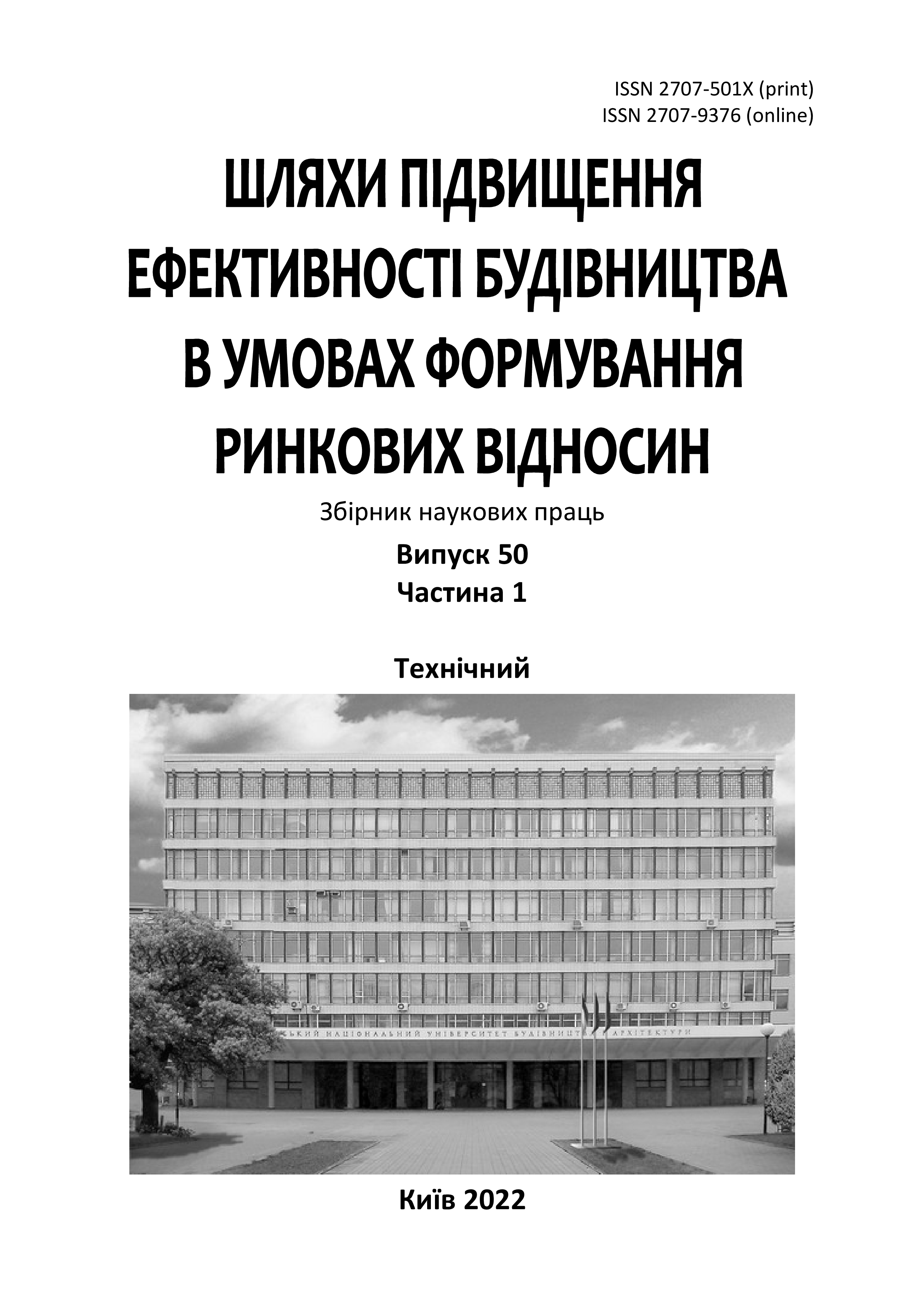Efficiency and optimization of building insulation with the help of facade systems
DOI:
https://doi.org/10.32347/2707-501x.2022.50(1).164-174Keywords:
insulation, optimization, ventilated facade, modeling, resources, constructionAbstract
In the article Selection of optimal technological solutions for the installation of hinged ventilated facades using calculations. Necessary factors are identified, in which the optimal methods of facade insulation, the minimum period of time for installation work and the corresponding cost of materials and works are determined. Optimization of organizational and technological solutions can be achieved due to the limit limitations of design indicators. The solution of this task was carried out using the combination of duration and cost diagrams.
Minimization of resource costs can be achieved by increasing the number of work teams and working days per week. According to the results of the research, the following parameters of the technological process were recommended for the use of the following parameters of the technological process, provided that the minimum indicators of cost and duration were achieved when installing single-layer thermal insulation systems: - number of crews - 3; - number of working days per week - 6.
The construction duration indicator is one of the most important at all stages of organizational, design and economic preparation for the installation of the house insulation system. The duration of warming is determined according to the calendar schedule. In turn, the cost of construction and installation work may change during the construction process due to changes in the cost of the project as a whole. Therefore, it is also quite relevant to determine the influence of organizational and technological factors on it.
References
Савенко В.І. Енергозберігаючі технології в будівництві та системи управління якістю. Будівельні матеріали , вироби та санітарна техніка. Вип. №1 (31). НДІБМВ. К., 2009. С. 96-99.
Лівінський О.М., Савенко В.І. Менеджмент якості в будівництві і геном ділової досконалості організації. Монографія. Київ. Центр учбової літ. 2018. 233с.
Луцкий С.Я. Технология строительного производства. М. Высш. шк. 1991. 384 с.
Білоконь А.І. Контроль якості теплозабезепечення населення. Сб. науч. трудов. Серия: Строительство, материаловедение, машиностроение. Вып. 38. Днепропетровск. ПГАСА, 2006. С. 179-183.
Ершов М.Н. Анализ технологических особенностей применения фасадных систем теплоизоляции. Технология и организация строительного производства. №4/№1(9). М. 2014-2015. С.43-47.
Новицкий Н.И. Организация, планирование и управление строительным производством. Финансы и статистика. М. 2007. 576 с.
Вознесенский В.А. Экспериментально-статистическое моделирование и оптимизация в материаловедении. К.УДНТЗ. 1993.16 с.
Менейлюк А.И. Выбор эффективных организационно-технологических решений возведения жилых зданий. Міжвідомчий наук.-техн. зб. Будівельне виробництво. Вип. 53. Київ. НДІБВ. 2012. С. 93-97.
Менейлюк А.И. Влияние технологических особенностей устройства вентилируемых фасадных систем на их теплозащитные свойства. Вісник ХНУБА. Вип. 58. Харків. 2014. С.131-135.
Піщаленко Ю.О, Савенко В.І. Енергозбереження в будівництві. Вид.УАН ТОВ НВП ВІР. К. 2008. С.65.
Downloads
Published
How to Cite
Issue
Section
License

This work is licensed under a Creative Commons Attribution 4.0 International License.
Authors who publish with this journal agree to the following terms:
- Authors retain copyright and grant the journal right of first publication with the work simultaneously licensed under a Creative Commons Attribution License that allows others to share the work with an acknowledgement of the work's authorship and initial publication in this journal.
- Authors are able to enter into separate, additional contractual arrangements for the non-exclusive distribution of the journal's published version of the work (e.g., post it to an institutional repository or publish it in a book), with an acknowledgement of its initial publication in this journal.
- Authors are permitted and encouraged to post their work online (e.g., in institutional repositories or on their website) prior to and during the submission process, as it can lead to productive exchanges, as well as earlier and greater citation of published work (See The Effect of Open Access).

